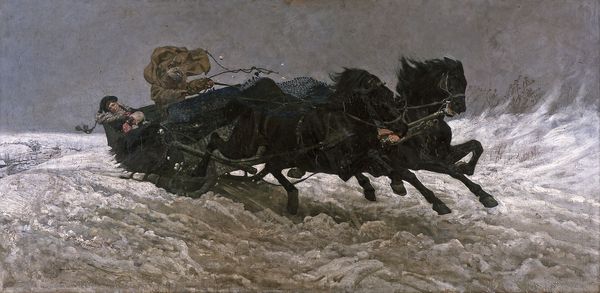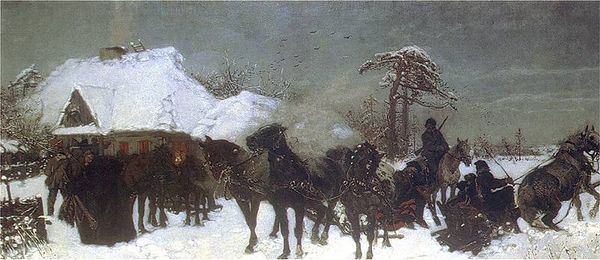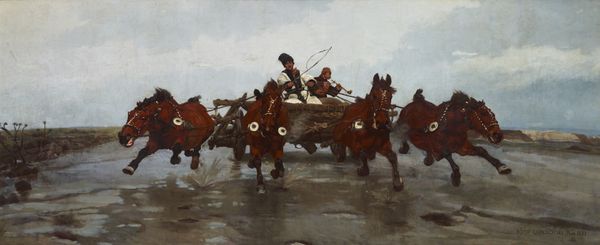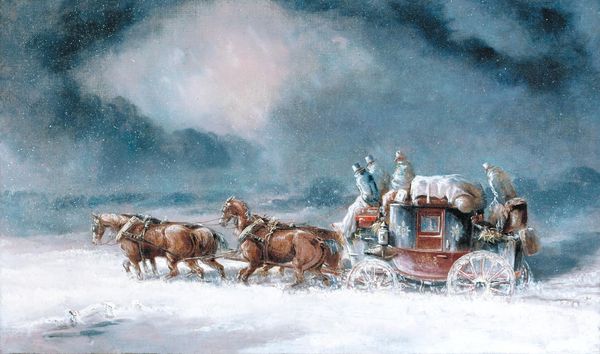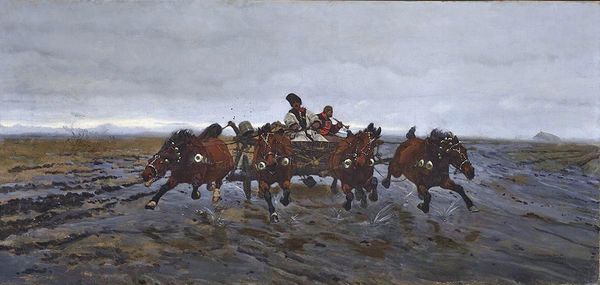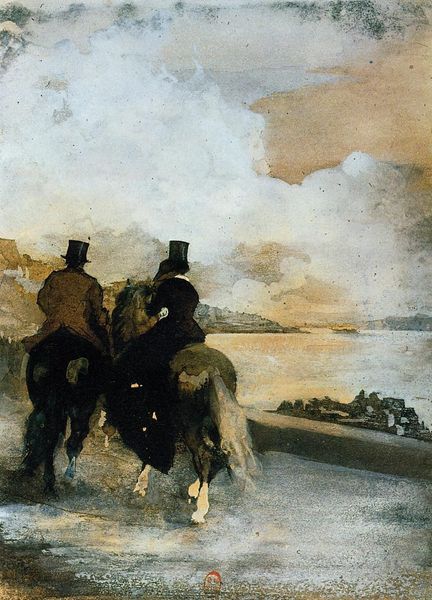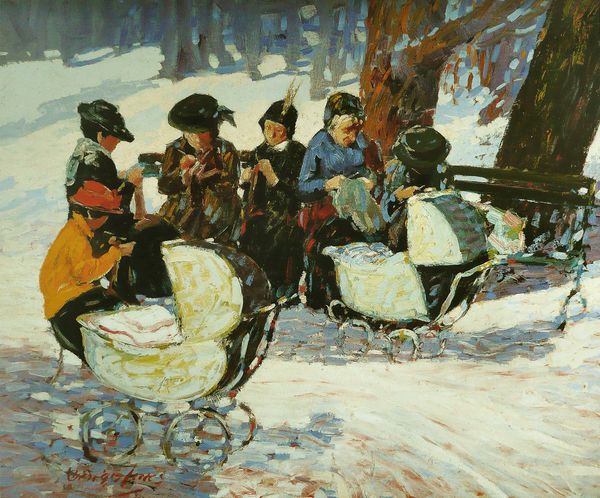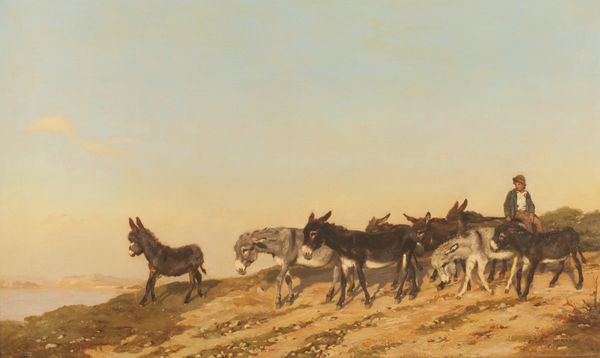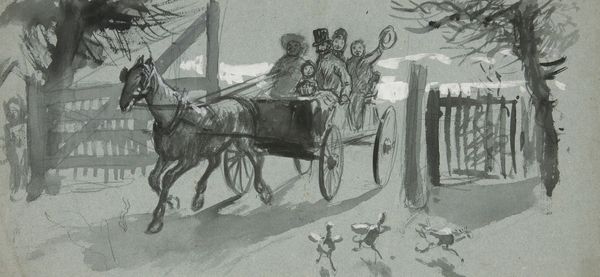
Copyright: Public domain
Editor: Józef Chełmoński’s "Four in Snowdrifts," painted in 1873, captures a horse-drawn sleigh racing through a snow-covered landscape. There's an intense, almost frantic energy, driven by the motion of the horses. What captures your attention when you look at this work? Curator: It’s the palpable sense of speed and wildness, isn't it? I imagine myself right there, bracing against the biting wind. Chełmoński really nailed the raw, untamed spirit of the Polish winter landscape. And have you noticed how the blurred lines and impasto technique emphasize the feeling of movement? It's like he’s bottled pure kinetic energy. Do you get a sense of romanticism intertwined with realism in it? Editor: I see it, absolutely. The way the horses seem to burst forth from the canvas, almost overwhelming the human figures. And that slightly hazy background lends itself to romanticism. Is there a story implied, or is it simply about capturing a moment? Curator: Ah, the beauty of a genre painting lies in the suggestion. To me, the implied narrative dances between the everyday and the epic. Maybe they're rushing towards a warm hearth, or maybe escaping something… perhaps the harsh realities of 19th-century Poland? The open-endedness makes it even more compelling, wouldn’t you agree? Editor: That’s a great point. I hadn’t considered the broader context. It transforms the painting from just a scene to something much richer. Curator: Exactly. And those dark, almost abstract shapes that represent the horses against the stark white snow, somehow capture both their brute power and vulnerability. I like how my interpretation shifted today through this little talk we had. Editor: I completely agree. I’ll definitely be looking at this one differently now, focusing more on the emotions it evokes. Thanks for illuminating its context and mood so brilliantly!
Comments
No comments
Be the first to comment and join the conversation on the ultimate creative platform.



